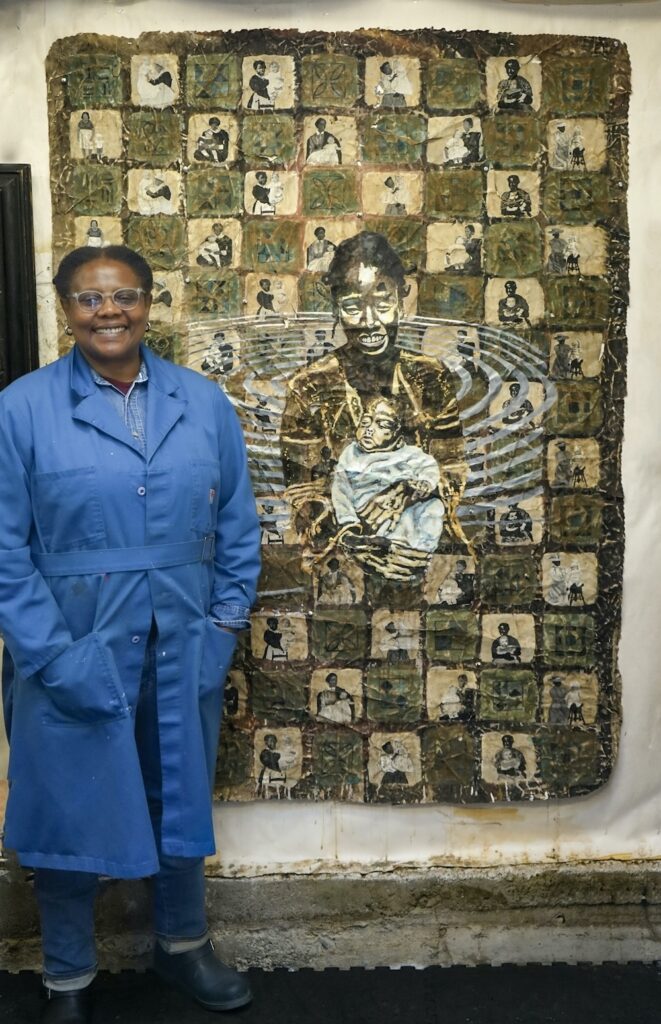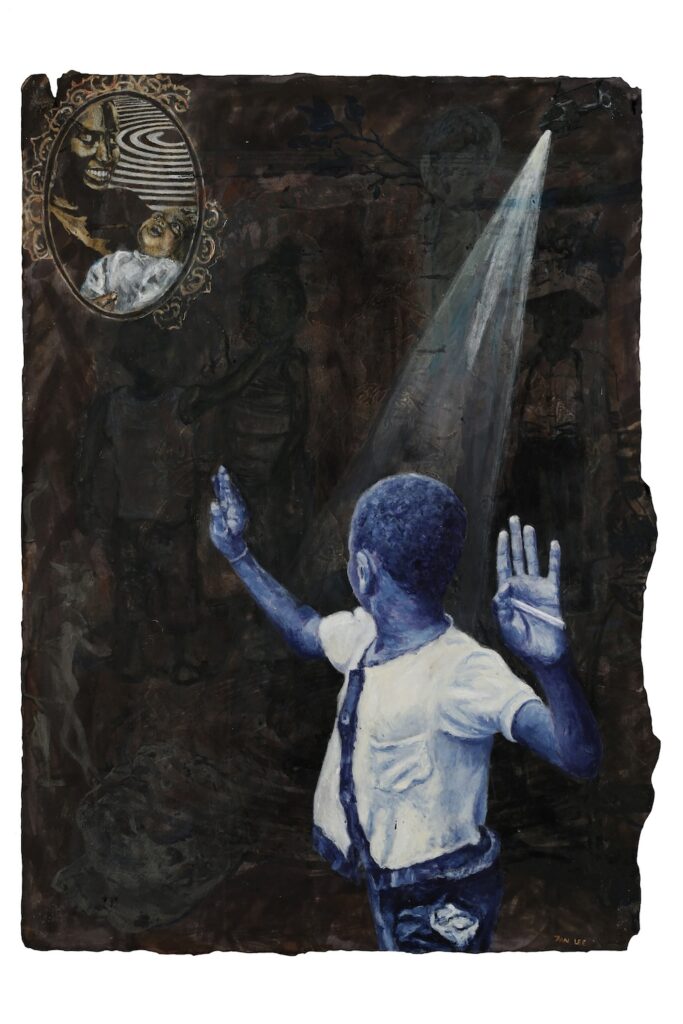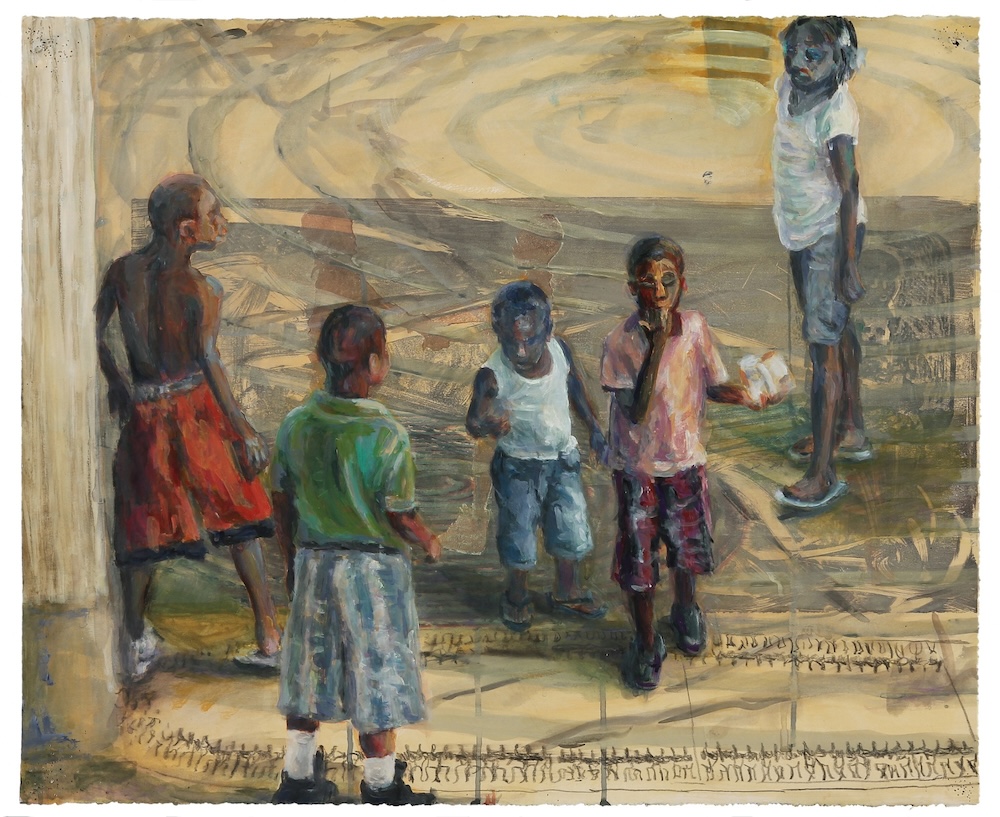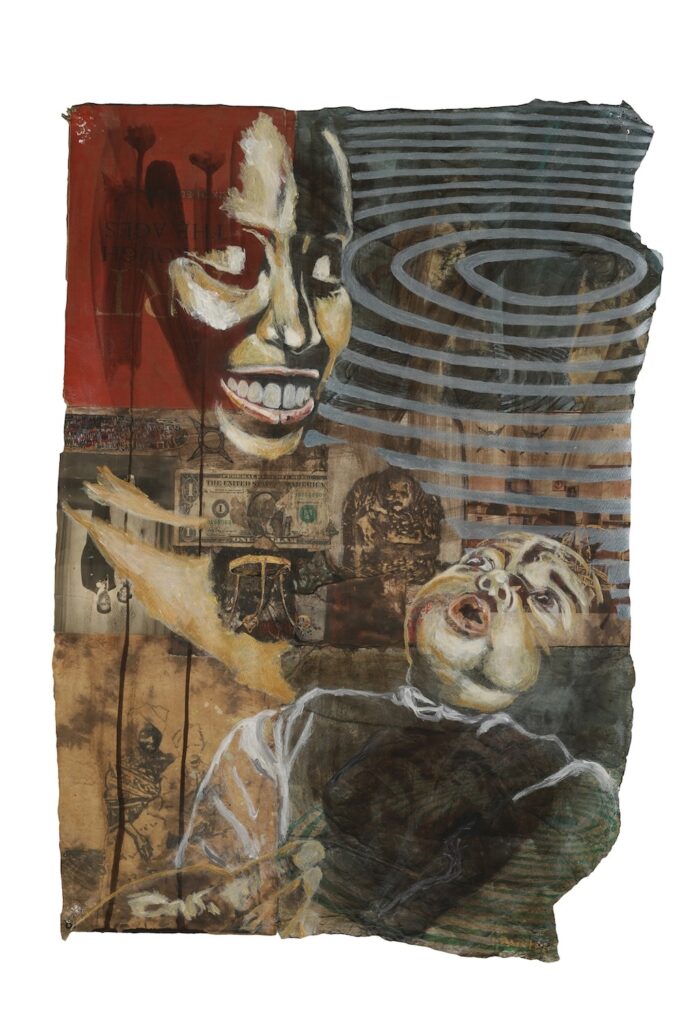“I’ve been heavily inspired by ancient history and fables from my elders and my culture,” said Fan Warren in an interview with 48hills. “I’m also influenced by African American folk art—my favorite artist being Bill Traylor—and more contemporary artists like Mildred Howard, Robert Rauschenberg, Romare Bearden, the Hairy Who movement, and many more.”
For over three decades, Warren has examined perceptions of past and present African American culture.
“My work is not merely a social commentary but a profoundly personal odyssey through the colonization, assimilation, and disfranchisement of my people in the Americas. It reflects my ancestral and childhood memories of growing up in Birmingham, Alabama and being part of the last great migration North to Chicago, Illinois. These experiences, woven into the fabric of my art, invite you to share in my journey and understand the complexities of our shared history,” Warren said.

Her work is influenced by the collective consciousness of the survivors of those passages and their relationship to the Americas. Since the 1980s, Warren has embarked on her own peregrination, one of creative exploration with both subject matter and materials, working on thick paper and experimenting with a mix of traditional and nontraditional materials and methods.
“This was my way of pushing the boundaries of art and exploring new ways to create my historical documents or handbills,” she said.
In 1994, after finishing a residency at the Bemis Art Center in Omaha, Nebraska, she relocated to the Bay Area with her partner.
“We were exhausted in Chicago, so we moved to California to be closer to our friends and family,” she said.
She currently lives and works in the Redwood Heights neighborhood of Oakland and says that being part of the Bay art scene is satisfying because it’s a small community where everyone knows each other.
Warren received her BFA in Drawing and Painting from Illinois State University in 1982 and completed an MFA from the Chicago School of the Art Institute in 1985. She has been on the faculty of Peralta Community Colleges since 2000, leading classes in Drawing Composition and African American and Modern Art History, and has also taught at Las Positas College and Chabot College, all located in the East Bay. Warren has been a visiting artist at Marin Academy in San Rafael, the Oakland Museum of California, SFMOMA, and Southern Exposure Gallery in San Francisco, among others, and a guest lecturer at UC Berkeley.
In her converted two-car garage cum art studio, Warren has found creative sanctuary for the past 15 years. To here, it is not just a space but, “an extension of her artistic journey.” From the rafters to the corners, the space is embellished with materials that have become integral to her creative process: antique picture frames, chairs, paintbrushes and books, and several tables, easels, and walls to utilize in the making of her work.

“My process is a unique blend of traditional and unconventional techniques. I stress my paper’s surface with fire, earth, herbs, fabric dyes, and paint, not just to add color but to convey a sense of history. I prefer not to work on white paper, I find it too sterile,” Warren said.
She incorporates old drawings, paintings, and photographs into new work, bringing each surface to life with images of children, adults, and historical symbols. Warren implements a variety of media for her renderings including acrylics, watercolors, inks, pastels, and charcoal in textural consideration. Selecting images that bring attention to surviving Western culture, she merges symbols of transformation with historical references, such as segregation in America.
“How do I know when a piece is done? I look at it for a long time, studying it, communicating with it, and then it tells me it’s finished,” she said.
The spiral appears as a powerful and recurring symbol in several bodies of her work, including her older Legacy series. She says it represents the life force and soul’s movement in the spiritual dimension.
“This ancient universal spiral’s timeless movement and flow conveys history and its impacts on present society. The ring’s changing pattern connects to ancestral memories; each spiral loop brings one back to the same place but with a deeper understanding and appreciation of the profound realities of our existence. This symbolism, intricately woven into my art, invites you to explore the layers of meaning and appreciate the depth of thought behind each piece,” she said.

Warren will have an exhibit of works from the Legacy series at the Harrington Gallery at the Firehouse Arts Center in Pleasanton, which runs from January 11 to March 1, 2025.
In her more recent The Black Madonna series, Warren introduces an archetype of the Black Madonna as a focal point, saying it is not just a religious symbol but a representation of an average Black woman and mother.
“She embodies the qualities of a loving and nurturing mother, a figure many can relate to and find comfort in. Layered beneath her are fragments of children, adults, symbols, ancient memories, and events. These works are part of a continuing investigation into how the past affects the present and future,” she said.
Warren also referenced the book Dark Mother: African Origins and Godmothers by Lucia Chiavola Birnbaum for the series. In these pieces, the Black woman is icon as balm, comforting the viewer as the impressions behind her come into focus.
“Fragmented images, racial and ancestral memories, and current events are layered over composed visual narratives questioning societal opinions. Beneath is a re-contextualized modern Black Madonna, inspired by the original dark mother, Isis, along with contemporized images of Black women lovingly holding their babies,” Warren said.

During the pandemic, the Black Madonna series was converted from black and white to iridescent gold and silver. Warren wanted to elevate the figure in the series to a grand symbolic status, accentuating and underlining the ancient symbolism to provide what everyone she knew was looking for at that time: the comfort of their mothers.
Artist Fan Lee Warren will continue to examine how history shapes and influences our present-day experience and future direction, through a synchronous lens. Her work is not just a personal meandering, but an invitation for others to join her on a voyage of discovery and reinterpretation of history. She hopes people can enjoy the complexities and beauty of the images while keeping an open mind to other cultures and seeing how our present life cannot be separated from our past.
“Together, we can delve into the depths of our shared history and emerge with a deeper understanding of our present and future,” she said.
For more information, visit her current website at fanleewarren.net and her pages on Instagram and Facebook. Coming in late October, visit her new website at fanleewarren.com.





